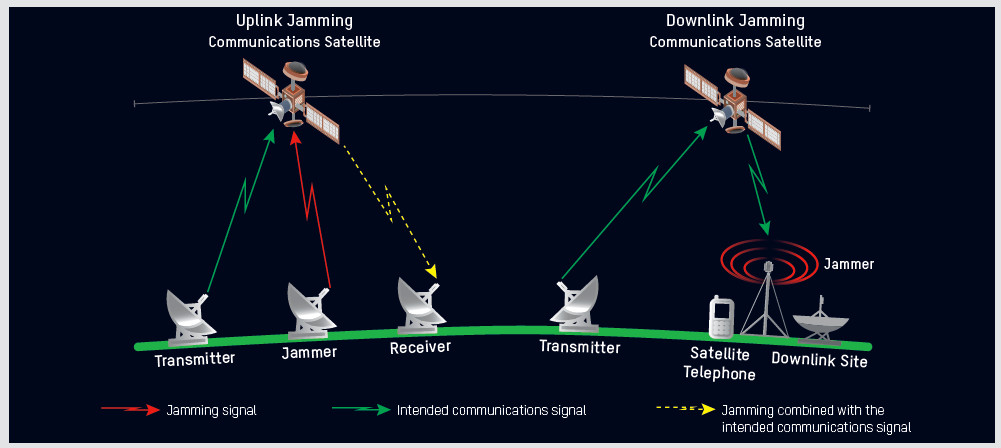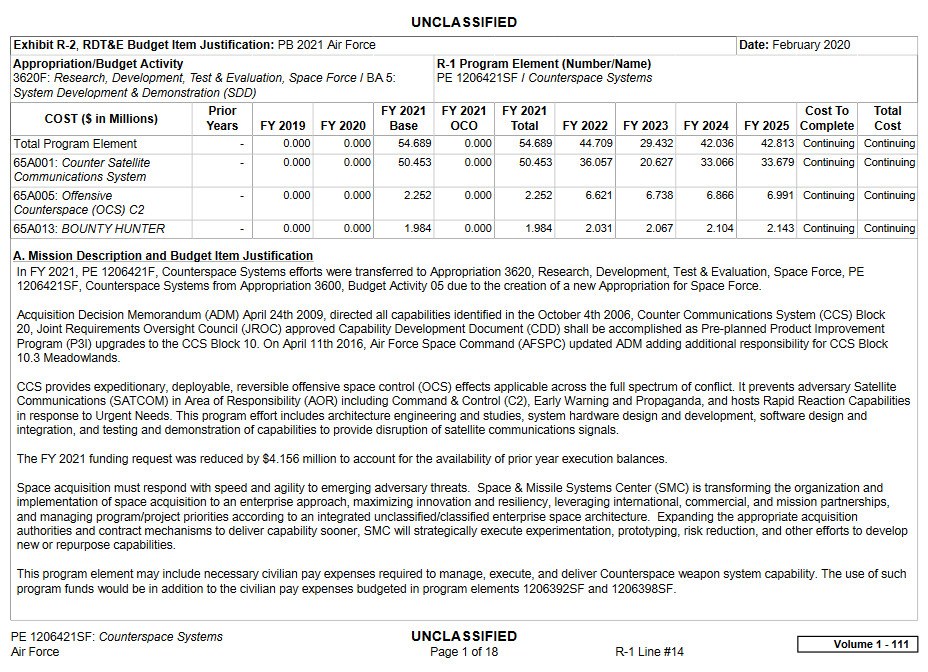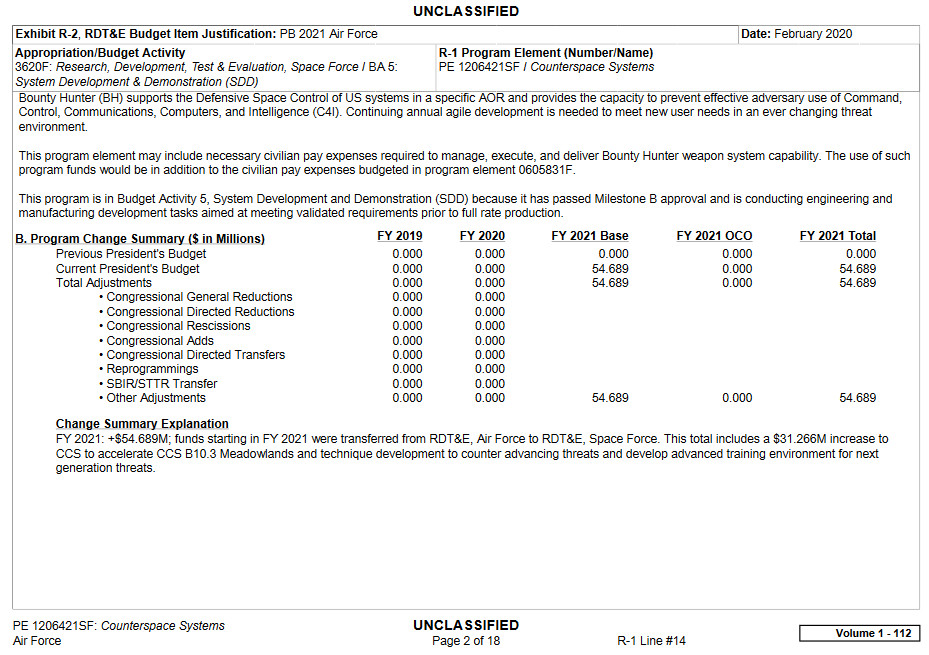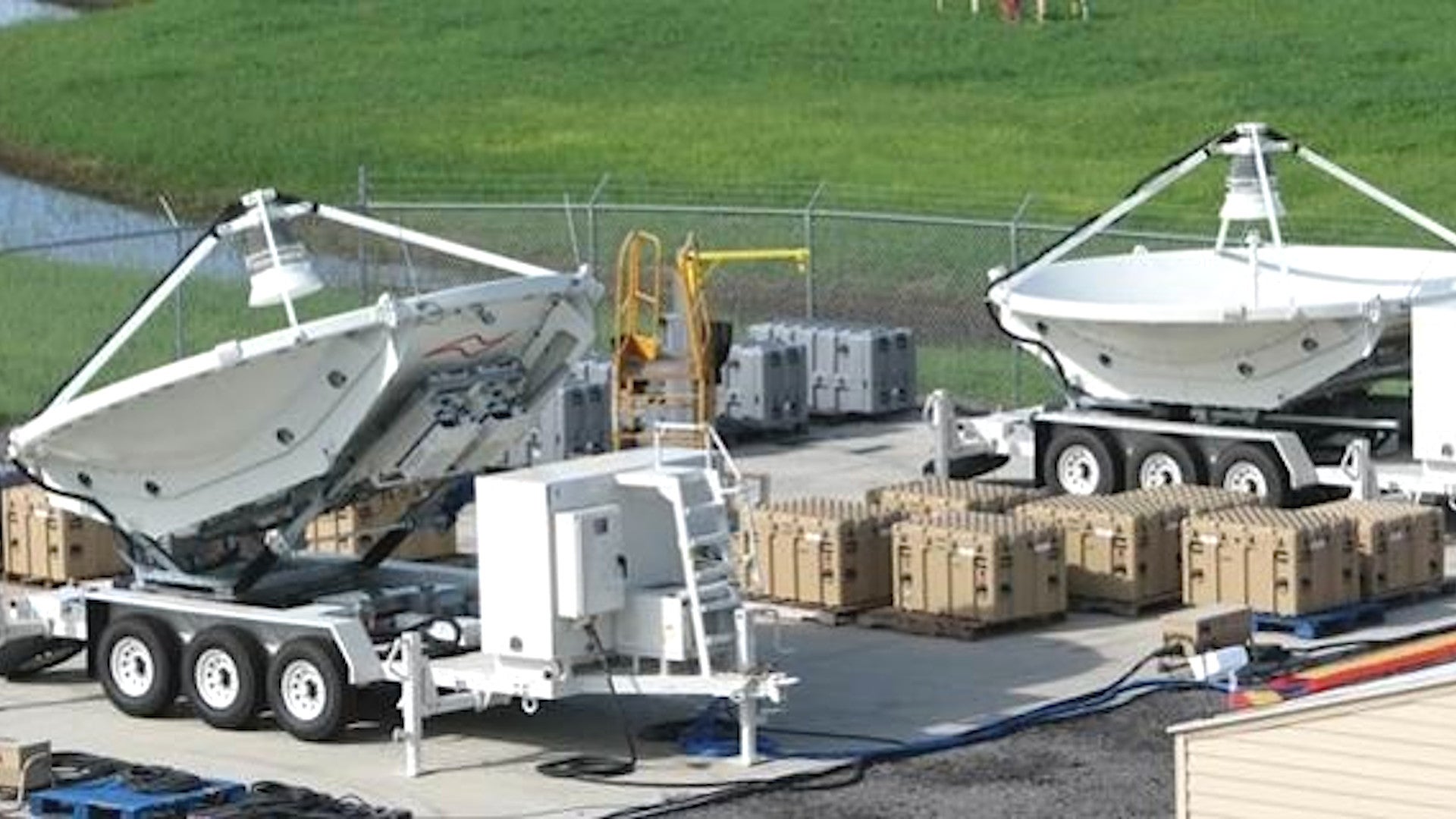U.S. Space Force has begun operating a new offensive weapon system, an upgraded version of a ground-based satellite communications jamming system, for the first time in its short history. The first iteration of the Counter Communications System entered U.S. Air Force service in 2004 and the program has now gotten transferred to the newest branch of the American military.
The Space Force declared it had reached initial operational capability with the Counter Communications System Block 10.2, or CCS B10.2, on Mar. 9. The Harris Corporation, which merged with L3 Technologies last year to form L3Harris Technologies, had received the contract from the Air Force to develop this upgraded variant of the system in 2014.
The National Defense Authorization Act for the 2020 Fiscal Year, which Congress passed and President Donald Trump signed in December 2019, officially established Space Force as a separate service within the Department of the Air Force. Units and assets previously assigned to Air Force Space Command now form the core of the new service, which is still very much in the process of standing up.
“CCS is the only offensive system in the United States Space Force arsenal,” Lieutenant Colonel Steve Brogan, the Combat Systems branch materiel leader within the Space Force’s Space and Missile Systems Center’s (SMC) Special Programs Directorate, said in an official news piece about the system in January 2020. “This upgrade puts the ‘force’ in Space Force and is critical for Space as a warfighting domain.”
The Air Force introduced CCS in 2004 and fielded the Block 10.1 upgrade in 2014. Last year, Harris also received a $72 million contract to begin developing the new iteration, the Block 10.3 variant. As of September 2019, the Air Force reportedly had at least seven complete CCS packages, which are intended to be rapidly deployable.
“CCS has had incremental upgrades since the early 2000’s, which have incorporated new techniques, frequency bands, technology refreshes, and lessons learned from previous block upgrades,” Major Seth Horner, the CCS B10.2 Program Manager, also said in January. “This specific upgrade includes new software capabilities to counter new adversary targets and threats.”
The various versions of the system all include a number of trailer-mounted dishes and associated equipment. Details on exactly how the CCS functions are limited, but it is understood to be a jamming system that disrupts transmissions from enemy communications satellites. This could give U.S. forces valuable advantages on the battlefield by disrupting the ability of enemy units to rapidly communicate and share information using satellite-based systems.

The Air Force has described the effects as “reversible” in the past, meaning that when the jammer shuts off, the target satellite would go back to functioning are normal. The service had specifically chosen a non-kinetic anti-satellite weapon in order to avoid having to physically destroy hostile assets in space, which would create debris that could pose risks to friendly systems in orbit. This is notably different from Russian and Chinese anti-satellite efforts, among others, which include ground-based and air-launched kinetic interceptors, as well as possible dual-use “killer satellites.” There are also reports that both countries are working on ground-based anti-satellite directed energy weapons.
“We are not going down that path,” U.S. Air Force General John Hyten, then-head of Air Force Space Command, told lawmakers in 2016, referring to the development of capabilities that would totally destroy enemy satellites and create debris. Hyten is now Vice Chairman of the Joint Chiefs of Staff.
Hyten’s comments would not necessarily preclude the development of offensive space capabilities that could create non-reversible effects and effectively destroy a target in space without totally disintegrating it. This could still include kinetic attacks, such as using a directed energy weapon, possibly mounted on another satellite, to destroy certain components without creating any substantial amount of debris.

Regardless, Space Force reaching initial operational capability with a new offensive weapon system for the first time is certainly a notable milestone for the still extremely young service. Beyond that, it’s also a rare public announcement regarding the development of an American anti-satellite capability of any kind.
The Counter Communications System has long been the only such capability the United States publicly acknowledges having, though it is understood that it has other offensive counter-space capabilities. Space Force Vice Commander Lieutenant General David Thompson told lawmakers the new service was working on new capabilities “to protect and defend” America’s space-based assets during a hearing on Mar. 4.
“We began prototyping, and demonstrating, and preparing for what I’ll call abilities to protect and defend our assets, and we did that extensively in the budget in [the 2020 Fiscal Year],” he said. “In [the 2021 Fiscal Year], we are now taking steps to extend that across the fleet, as well as look at other capabilities to be able to continue to defend those assets that we have and defend adversary use of space.”

In February 2020, the Air Force mentioned another counter-space system, called Bounty Hunter, in a news story about recent tests that the 17th Test Squadron had conducted. “The 17th TS’ [Test Squadron] Operating Location-Charlie [OL-C] conducts testing on the base’s higher classification systems,” that official news item said.
“Recent tests we’ve done have been on the Bounty Hunter and the Counter Communications System, which are both electronic warfare systems located at Peterson [Air Force Base],” Technical Sergeant Tricia Benson, the OL-C Flight Chief and Project Manager, said in an official interview. There was no further information on Bounty Hunter or its capabilities.
In its first-ever budget request, for the 2021 Fiscal Year, Space Force asked for nearly $54.7 million in funds for research and development of “counterspace systems,” including almost $50.5 million for continued work on the CCS program and just under $2 million for upgrades to Bounty Hunter. The remaining funds would support the development of a new and improved command and control architecture for counterspace capabilities. Details about all of these projects in the publicly available budget documents were extremely limited.


Other U.S. military officials have alluded to the still-classified capabilities recently, as well. Former Secretary of the Air Force ominously stated last year that it might be necessary to conduct a show of force using unspecified systems to deter potential adversaries, such as Russia or China, from attacking American satellites.
“We have a capability called a Counter Communications System that is built to deny an adversary the use of space communications,” General Hyten had also said in an interview with CBS News’ “60 Minutes” back in 2015. “All I can say is it’s a capability that exists on the ground and it does not create debris in any way.”

“The only two things you told me about the U.S. ability to fight in space, are the ability to maneuver your satellites and to jam other satellites. Is that it?” CBS News’ David Martin then asked the general.
“That’s not it, but that’s all I can tell you,” Hyten responded.
Ensuring the United States has the ability to conduct a conflict in space, including as part of a larger crisis on Earth, and what such a conflict might actually look like are certainly among the most pressing issues facing Space Force, something the War Zone has discussed in detail in the past. The fledgling service has now publicly acquired its first new counter-space system and it will likely take over other existing top-secret offensive space capabilities, and the development of future ones, soon, if it hasn’t already.
Contact the author: joe@thedrive.com
